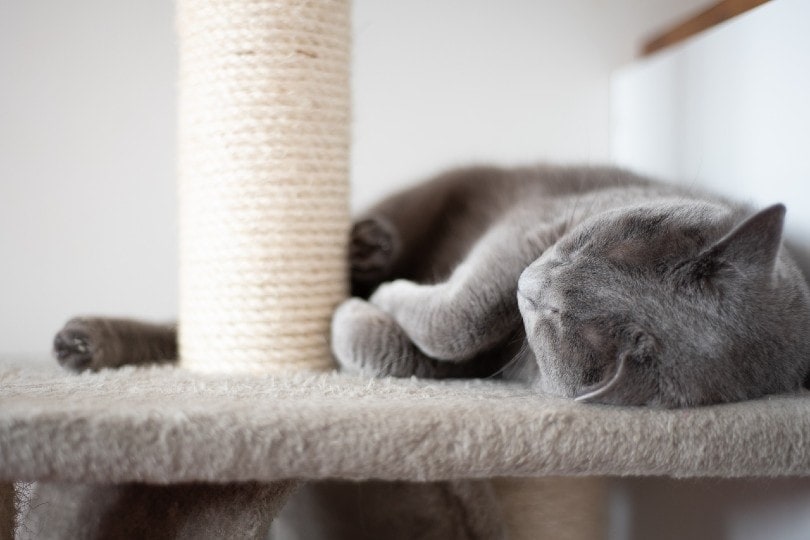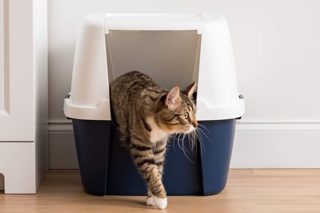How Many Months Are Cats Pregnant? Vet-Reviewed Labor Stages, Facts & FAQ

Updated on
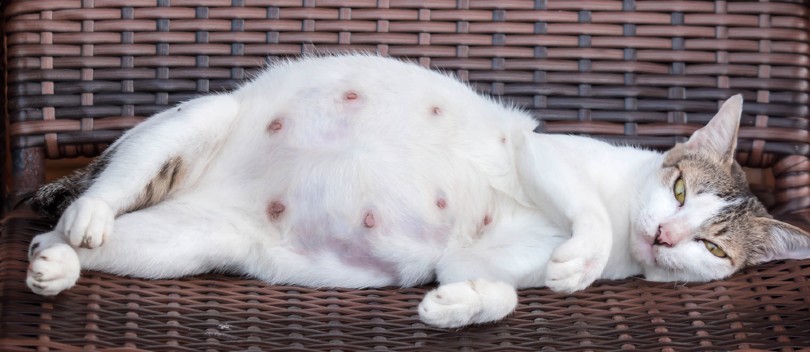
Do you have a cat that’s expecting? Do you have no idea what to expect throughout the entire process? Better yet, do you have any idea how many months your cat will be pregnant? Fear not if you’re in this boat because we’re here to help! The short answer is that cats are pregnant approximately 63 days, or a little more than 2 months.
In this article, we explore how many months you can expect to have a pregnant feline on your hands, and we examine how to properly take care of her so everything goes as smoothly as possible for both her and her kittens.
How Many Months Are Cats Pregnant?
The answer to this million-dollar question is approximately 63 days. This is a short gestation period compared to humans, and the cat won’t show signs until approximately 2 to 3 weeks into the pregnancy. Given the short gestation period, let’s dive right into the valuable information.
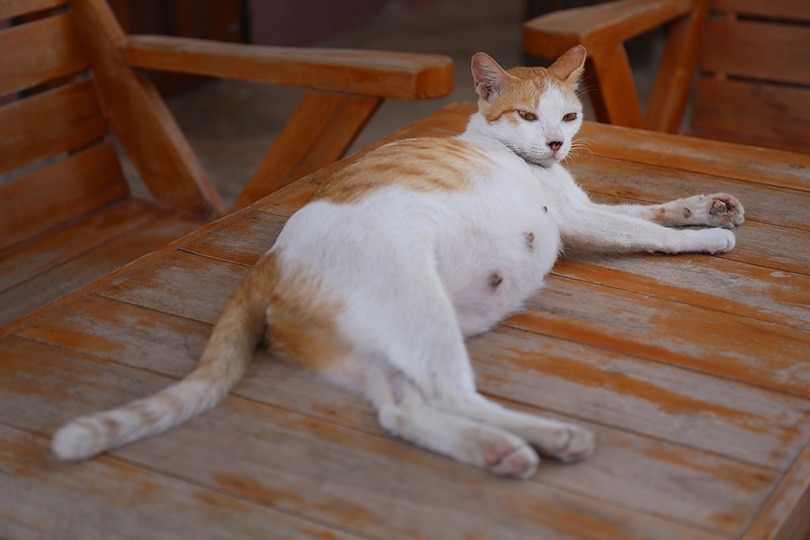
How Can You Tell How Pregnant a Cat Is?
One easy way to tell is if her belly feels bigger than normal. While this isn’t full proof, it’s a good starting point. Her belly will get more prominent after the 30-day mark from which mating occurred.
Another way to tell is if her nipples are pink and enlarged. The nipple change usually occurs within 2 to 3 weeks after conception.
Expecting cats are not immune to morning sickness. Much like us humans, they may suffer from episodes of vomiting, usually in the mornings. Any type of vomiting should not be overlooked and is not only a sign of pregnancy, so we recommend keeping a close eye on her in case something else is causing it.
An increased appetite is another clue. You know your cat the best, so if it seems she has the munchies more than usual, it could be because she’s with kittens!
Another possible indication is if your cat becomes more clingy and affectionate. That said, some pregnant cats become more reclusive and moody, so knowing your cat’s personality will help you determine if she’s possibly pregnant.
If any of these clues are not definitive, your veterinarian can run tests to know for sure. An ultrasound can be effective after day 14 of conception. X-rays are another conclusive determination; an X-ray from day 45 into the pregnancy can be used to reveal how many kittens your feline will have. Typically, there are around three to seven kittens in a litter; however, if this is your cat’s first pregnancy, she might have only two to three kittens.
What to Expect During Labor
When the day arrives for your cat to go into labor, you can expect three stages.
Labor Stage I
To back up just a bit, your cat will probably not eat 24 hours before going into labor. She’ll begin to have contractions, and you’ll know this when she starts panting. She will likely retreat to the area she has chosen to give birth. Monitoring her body temperature will determine that she’s in the first stage, as well. Her normal temp should be around 100°F to 102.5°F. During the first stage of labor, it can dip to 98°F to 99°F degrees.
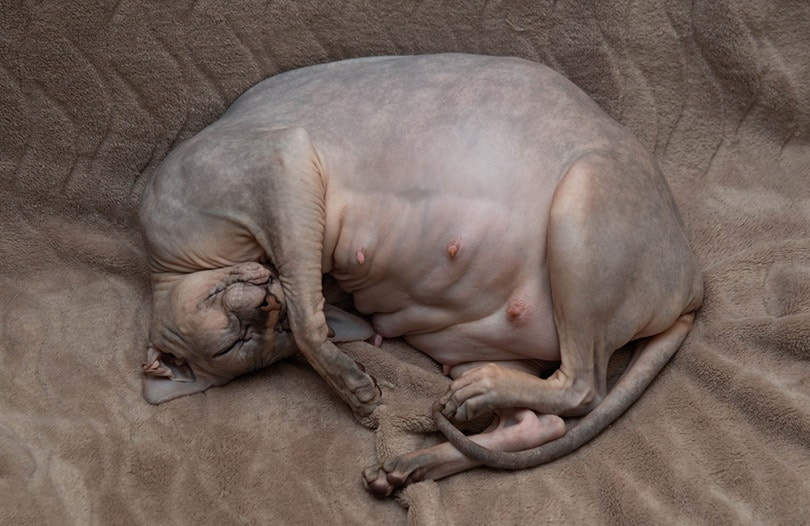
Labor Stage II
This stage is when the labor process becomes visible and the kittens are delivered. Your cat will strain, her stomach will tense up, and contractions will become more frequent. To get a better visual of the straining, it is similar to the appearance of your cat having a bowel movement. Once this stage begins, kittens will start appearing within 1 to 2 hours. The queen, or mother cat, may go through resting periods in between kittens that should not last more than 4 hours; otherwise, veterinary assistance should be sought.
Labor Stage III
Stage 3 happens immediately after the second stage. Basically, this stage involves passing the fetal membranes the kittens are born in, or the “afterbirth.”
What Happens During the Queening Stage?
The queening stage is when the mother cat cleans the kittens, which involves licking and removing the fluids and placental tissues. She’ll also chew the umbilical cord. In the unlikely event that she does not remove the sac or umbilical cord herself, you’ll need to step in and lend a hand.
Tear open the sac, and use a dry towel to clean the kitten. You can use a string or dental floss to tie off the cord 1/2 inch from the belly wall and then cut the cord off from the other side of the tie. Clean the kitten until you hear the newborn cry. You can then place the kitten with their mother on a warm towel.
If your mother cat is showing no interest in her newborn, you’ll need to be prepared to help so the kittens have a chance of survival. If she does not clean the kittens herself, it’ll be up to you to clean them. However, most cats are excellent mothers and take care of their kittens.
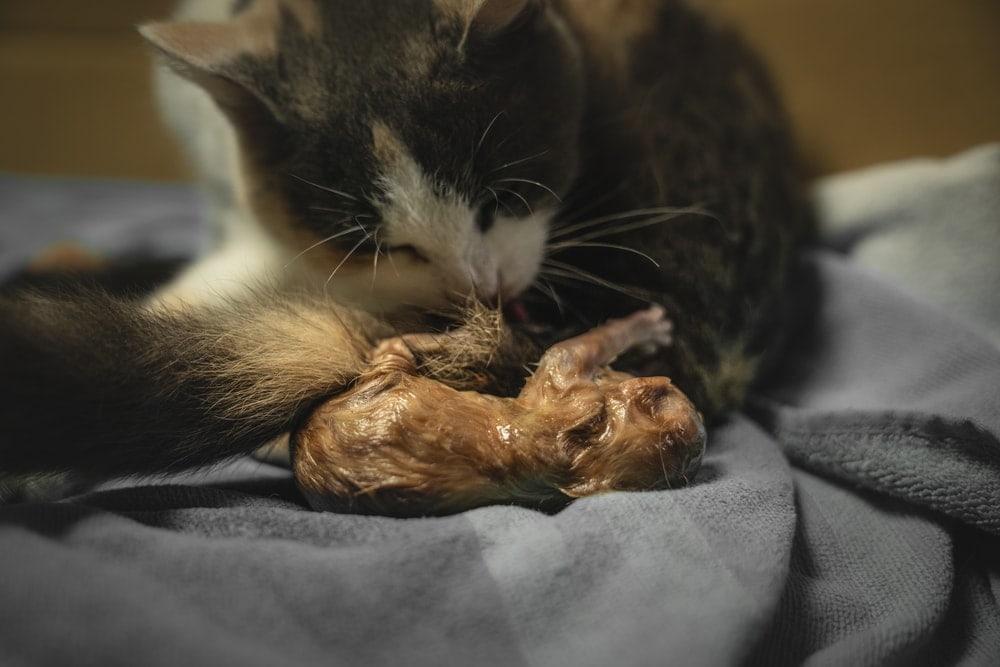
How to Care For Your Pregnant Feline and Her Kittens
The mother cat will need the appropriate nutrition for herself and her kittens. She will need additional calories and protein while she’s nursing. The mother cat can lose up to 40% of the weight that she gained during her pregnancy at the time of giving birth. Veterinarians recommend high-calorie and protein-rich kitten food during this critical time to make up for the loss.
Feeding kitten food to both mother and kittens is essential to keeping the mother cat healthy and giving the kittens a healthy start at life. Kitten food is specifically formulated with the necessary components for a healthy diet. The mother cat will need to eat more often than she normally does, so make sure that you measure the amount of food she eats and that she has access to food at all times.
Conclusion
If you have a pregnant feline, we hope the information in this article eases your mind on what to expect during her pregnancy. Now that you know how many months cats are pregnant, you can plan accordingly leading up to the actual birthing process.
If you have additional questions, it’s wise to consult with your veterinarian, and we wish your pregnant feline and her kittens all the best.
See also:
- How to Stop a Cat From Getting Pregnant Naturally: Vet-Approved Methods
- How to Kitten-Proof Your Home: 13 Simple Tips
Featured Image Credit: Bill Roque, Shutterstock





